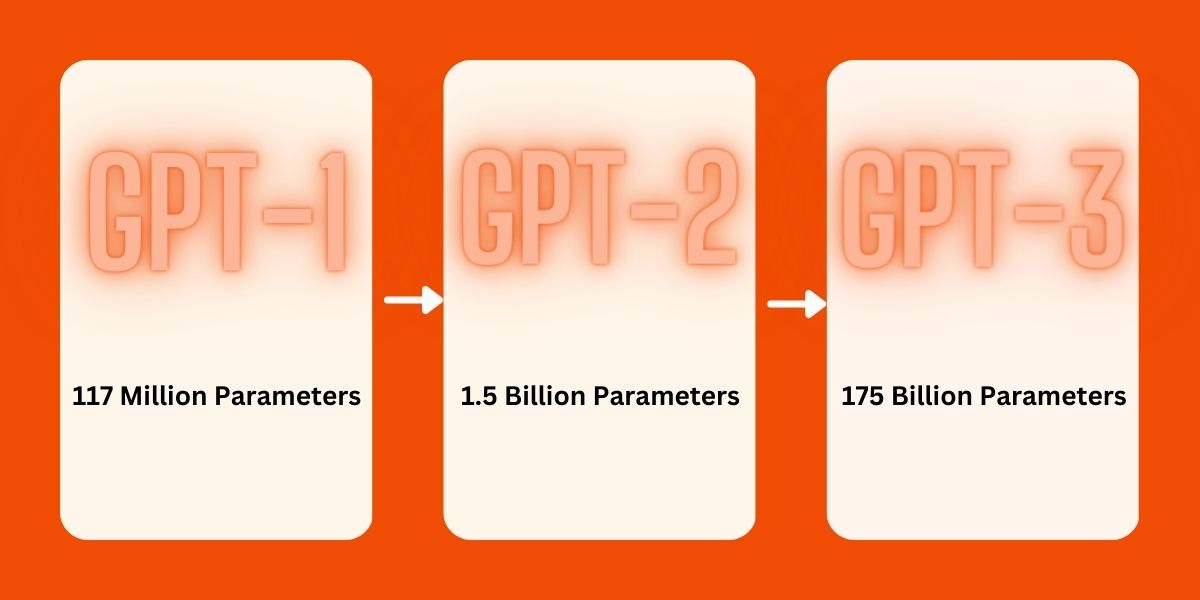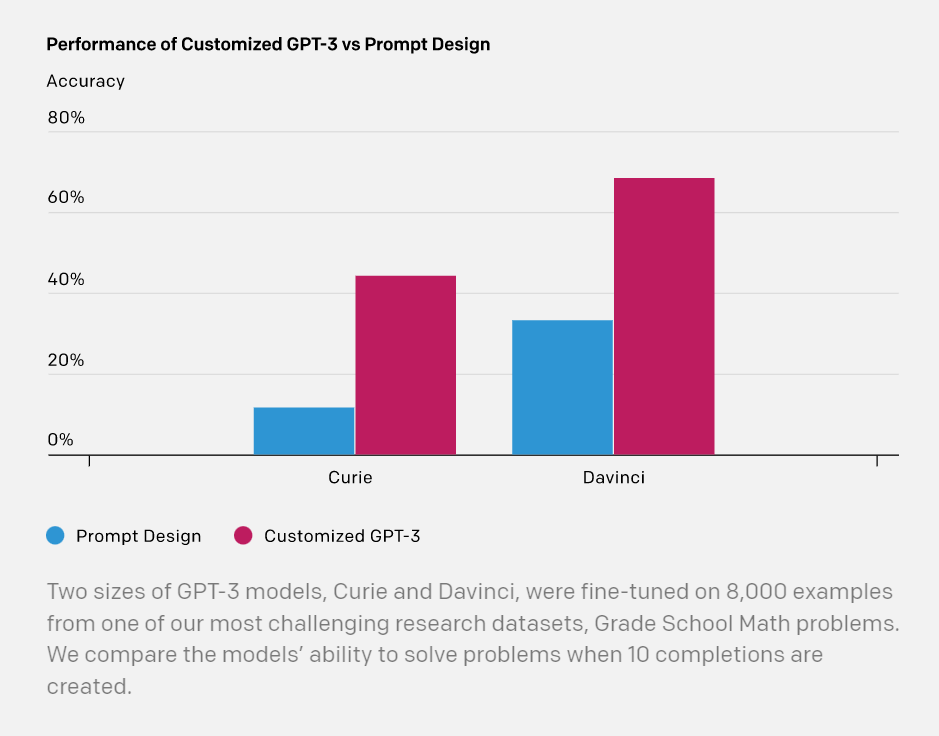Last Updated on 2 years by admin
Fine Tuning GPT3 for your business needs
Saurav Kharb | Published on 14 February 2023
ChatGPT is the new global sensation that has everyone talking about it. And understandably so, since it does seem magical how it can tell you pretty much anything you want! While that’s great just as it is, there are ways for you to get even better and more tailored answers by fine tuning GPT3. Before we get into that, let’s start with the basics.
What is ChatGPT?
ChatGPT is a highly advanced language model developed by OpenAI, which has revolutionized the way humans interact with machines. The model is based on the transformer architecture and has been trained on a massive dataset of text, allowing it to generate human-like responses to a wide range of queries.
At its core, ChatGPT works by using a deep neural network to analyze and understand the input it receives, and then generate an appropriate response based on that analysis. The model uses various techniques such as attention mechanisms and sequence-to-sequence modeling to generate contextually relevant and accurate outputs.
ChatGPT represents a major leap forward in the field of AI and language processing, providing new and innovative ways for humans to interact with machines. With its impressive capabilities and continued evolution, ChatGPT has the potential to become an indispensable tool in many different fields and industries.
The Evolution of ChatGPT
The original GPT (Generative Pretrained Transformer) model was introduced in 2018, and since then, OpenAI has released several upgraded versions, each with its own unique features and improvements.

GPT-1 was the first of its kind and laid the foundation for the future evolution of the model. GPT-1 had 117 million parameters, which were trained on a collection of text data. Despite its relatively small size, GPT-1 was able to generate human-like responses and was considered a major breakthrough in the field of language models at the time of its release. However, GPT-1 had limited capacity when it came to handling context and maintaining consistency in longer conversations.
GPT-2 was released in 2019 and addressed some of the limitations of GPT-1. It had a much larger set of parameters – 1.5 billion—allowing it to generate more accurate and contextually relevant responses. Additionally, GPT-2 introduced the ability to fine-tune the model for specific tasks, making it even more versatile and useful.
GPT-3, the latest version of the model, has an impressive 175 billion parameters, making it one of the largest language models ever created. The increased number of parameters has allowed GPT-3 to generate highly coherent and fluent responses, very similar to those of a human.
Additionally, GPT-3’s advanced attention mechanisms and other improvements have made it capable of handling complex language tasks and generating more accurate outputs.
ChatGPT is a fine-tuned version of GPT-3 specifically designed for conversational AI.
What is fine tuning?
Fine tuning GPT3 allows developers to adapt the pre-trained GPT-3 model to specific use cases and tasks. Fine-tuning involves training the model on a smaller, task-specific dataset to adjust its parameters and weights to better perform a specific task.
Here’s a simple example to help you understand. ChatGPT can now tell you about the economies and major industries in almost all of the countries in Africa. But if you need specific information about the livelihoods of a village community in Kenya, you’ll need a more focused dataset. And that’s where fine-tuning comes in.
OpenAI tested the accuracy of their models Curie and Davinci and saw a sharp increase in both of them after fine-tuning. Here, they were testing the outputs for grade 10 math problem queries.
Fine tuning allows developers to leverage the vast amount of knowledge and understanding that GPT-3 has learned from its massive collection of training data, while also customizing the model to better fit the specific needs of their application.
The fine-tuning process can be performed in several steps:
-
- Preprocessing: The first step involves preprocessing the task-specific dataset to prepare it for training. This can involve cleaning the data, removing irrelevant information, and converting it into a format that can be easily fed into the GPT-3 model.
- Training: The next step is to train the GPT-3 model on the task-specific dataset. During training, the model updates its parameters and weights based on the data it is exposed to. The goal is to fine-tune the model so that it can better perform the specific task for which it is being trained.
- Evaluating: After training, the model’s performance is evaluated on a validation dataset to determine its accuracy and effectiveness. The fine-tuning process may need to be repeated several times to improve the model’s performance.
- Deployment: Once the fine-tuned model has been thoroughly evaluated and its performance is satisfactory, it can be deployed in the intended application or task.
Fine tuning use cases
So as we’ve seen, by fine tuning GPT-3, developers can create highly specialized and effective models for specific use cases, without having to train an entire language model from scratch.
Fine tuning GPT-3 has a wide range of potential use cases, including:
- Content Generation: Fine-tuning can be used for custom content generation, allowing it to generate high-quality articles, reports, and other types of text content for very specific topics.
- Question Answering: GPT-3 can be fine-tuned for question answering, allowing it to generate accurate and relevant answers to natural language questions. It can generate answers to queries that are highly specific to your company and to each of your customers. This will lead to a more enhanced and enjoyable user experience.
And finally, you guessed it…
3. Advanced Spreadsheet Answering: Using Formula Generator’s fine-tuning services, you can get your very own customized model. It’ll help you work with data by providing industry specific and accurate answers for all your spreadsheet queries. You can see for yourself, the benefits of AI for Excel. And now, you can improve upon that with our custom fine-tuned models.
Formula Generator’s Fine Tuning Service
Formula Generator has its own GPT3 fine tuning service that you can make use of! We provide data collection, data preprocessing, fine-tuning and deployment services—in short, the full package!
For example, if you’re working in real estate and you need specialized answers for the market in Seattle, we could deliver a model that gives you just that. We can train the model on your company and industry-related data. We will also help you deploy the app as a chatbot or its equivalent that you or your clients can start using instantly.
All you have to do to get started with us is send us a message! Learn more about our fine-tuning services and submit your request today! We’ll start work ASAP and before you know it, you’ll have the perfect fine-tuned model ready for use!
Also, if you’d like to use our ChatGPT for Excel tool first to see how we perform, click on the sign up button below!

